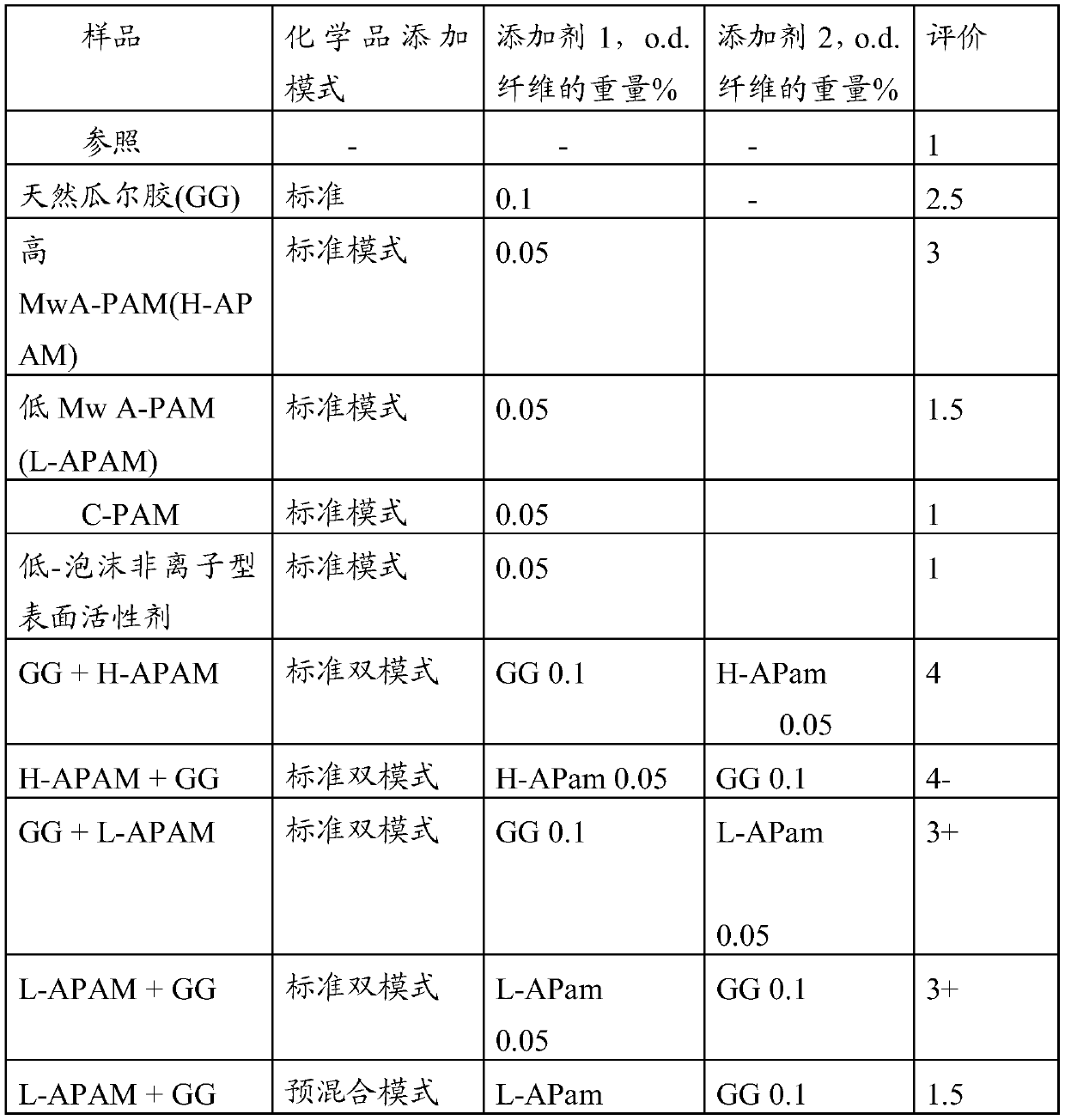Method to produce fibrous product comprising microfibrillated cellulose
A technology of microfibrillation and cellulose, applied in the direction of chemical instruments and methods, post-treatment modification of cellulose pulp, layered products, etc., to achieve the effect of promoting manufacturing and reducing the amount of agglomeration
- Summary
- Abstract
- Description
- Claims
- Application Information
AI Technical Summary
Problems solved by technology
Method used
Image
Examples
Embodiment
[0084] The effect of mixing fiber suspensions in a Diaf mixer on fibril aggregation was investigated in the presence of various additives. Before mixing, the suspension was diluted to a 1.5% by weight consistency using RO (reverse osmosis) water. The initial dispersion is typically achieved by dispersing a set amount of the fiber suspension in a dilute solution of the chemical additive using a stick mixer for 30 seconds (= standard addition mode). In reverse addition mode, dilute solutions of chemical additives are applied to the fibril suspension. In a standard two-additive system, the first chemical is applied using a standard mode of addition, ie fibrils are introduced into the additive solution and the second additive is dosed into the resulting mixture. In reverse dual mode, two chemical solutions are introduced into the fibril suspension. In the pre-mix mode, the chemical additives are mixed together before the fibrils are introduced into the resulting solution using t...
PUM
 Login to View More
Login to View More Abstract
Description
Claims
Application Information
 Login to View More
Login to View More - Generate Ideas
- Intellectual Property
- Life Sciences
- Materials
- Tech Scout
- Unparalleled Data Quality
- Higher Quality Content
- 60% Fewer Hallucinations
Browse by: Latest US Patents, China's latest patents, Technical Efficacy Thesaurus, Application Domain, Technology Topic, Popular Technical Reports.
© 2025 PatSnap. All rights reserved.Legal|Privacy policy|Modern Slavery Act Transparency Statement|Sitemap|About US| Contact US: help@patsnap.com


